San Francisco's Landmark Trees: Unveiling the Urban Forest and the Legacy of Mary Ellen Pleasant
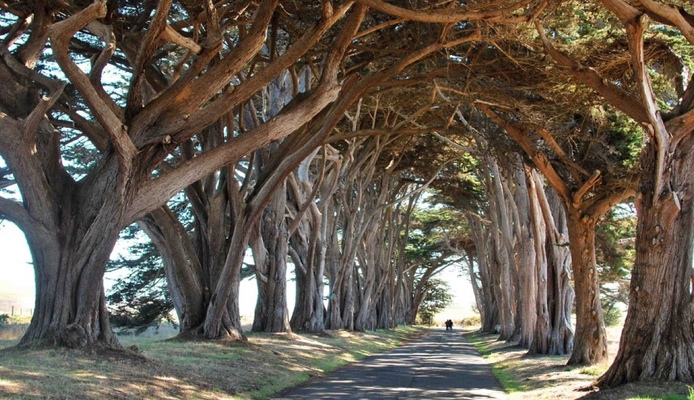
Introduction
San Francisco, a city globally acclaimed for its stunning architectural marvels and iconic landmarks, also shelters a less conspicuous yet equally captivating treasure: its landmark trees. These botanical giants, sharing space throughout the urban landscape, narrate a tale of remarkable ecological diversity and profound historical significance. Among these living monuments, the blue gum eucalyptus associated with Mary Ellen Pleasant stands out, embodying the rich tapestry of San Francisco's past and its deep connection with nature.
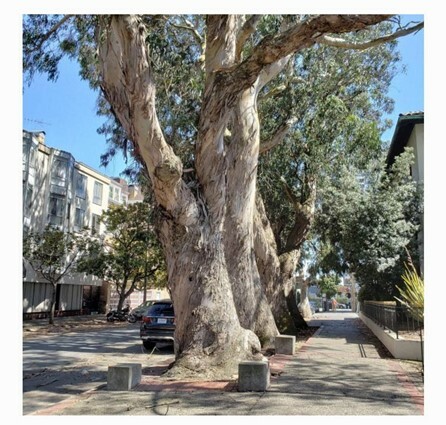
Urban Eucalyptus Trees. Photo credit: sfheritage.org
The Landmark Trees of San Francisco—A Tribute to San Francisco's Green Heritage
As we meander through the streets of San Francisco, these landmark trees stand as living tributes to the city's enduring bond with nature. They are more than components of the urban greenery; they are vital to the city's character, reflecting its resilience, diversity, and historical richness. This exploration invites readers to discover the green heart of San Francisco, a city pulsating with life and stories that resonate through its leafy avenues and wooded groves.
Understanding Landmark Trees in San Francisco
Our journey takes us deep into the verdant realms of San Francisco’s urban forestry. There, each tree stands as a sentinel of history. Each tree also stands as a testament to nature’s resilience. A landmark tree in San Francisco is distinguished by several remarkable attributes.
It's not just any tree that lines the city's streets or adorns its parks. These trees are recognized for their extraordinary size, suggesting a longevity and resilience that mirrors the city itself. Their age speaks of decades or even centuries, during which they have witnessed the transformation of San Francisco from a Gold Rush boomtown to a modern metropolis.
For residents and visitors alike, these trees are familiar beacons, evoking memories and a sense of belonging. They are places where people gather, celebrate, and reflect, forming an integral part of the community's collective memory.
Historical Significance: Witnesses to History
Many of San Francisco's landmark trees are intertwined with historical events and famous personalities that have shaped the city's destiny. They stand as silent witnesses to key moments in history, from the tumultuous days of the Gold Rush to the cultural revolutions of the 20th century. Some trees are associated with renowned figures, their stories adding a personal dimension to the city's historical narrative.
Celebrating San Francisco's Arboreal Heritage
In summary, the landmark trees of San Francisco are much more than components of urban greenery; they are living symbols of the city's history, ecological diversity, and community spirit. As we explore these natural monuments, we gain a deeper appreciation for their role in shaping the character and identity of San Francisco. They remind us of the importance of preserving and cherishing these green giants, ensuring that they continue to grace the city's landscape for generations to come.
San Francisco's Urban Forest: A Tapestry of Global Flora in the Heart of the City
San Francisco's urban forest presents a fascinating case study in ecological transformation and human influence. Contrary to what one might expect, the lush greenery that now characterizes the city is not the remnant of ancient woodlands. Instead, it is a testament to human ingenuity and ecological engineering. This unique aspect of San Francisco's landscape offers a glimpse into how urban environments can foster diverse ecosystems, even in the absence of native forest heritage.
Each tree species, whether towering redwoods, stately native oaks, or exotic palms and ginkgos, contributes a unique verse to the city's environmental narrative. This rich variety not only enhances the aesthetic appeal of San Francisco but also plays a crucial role in supporting urban wildlife and contributing to the city's biodiversity.
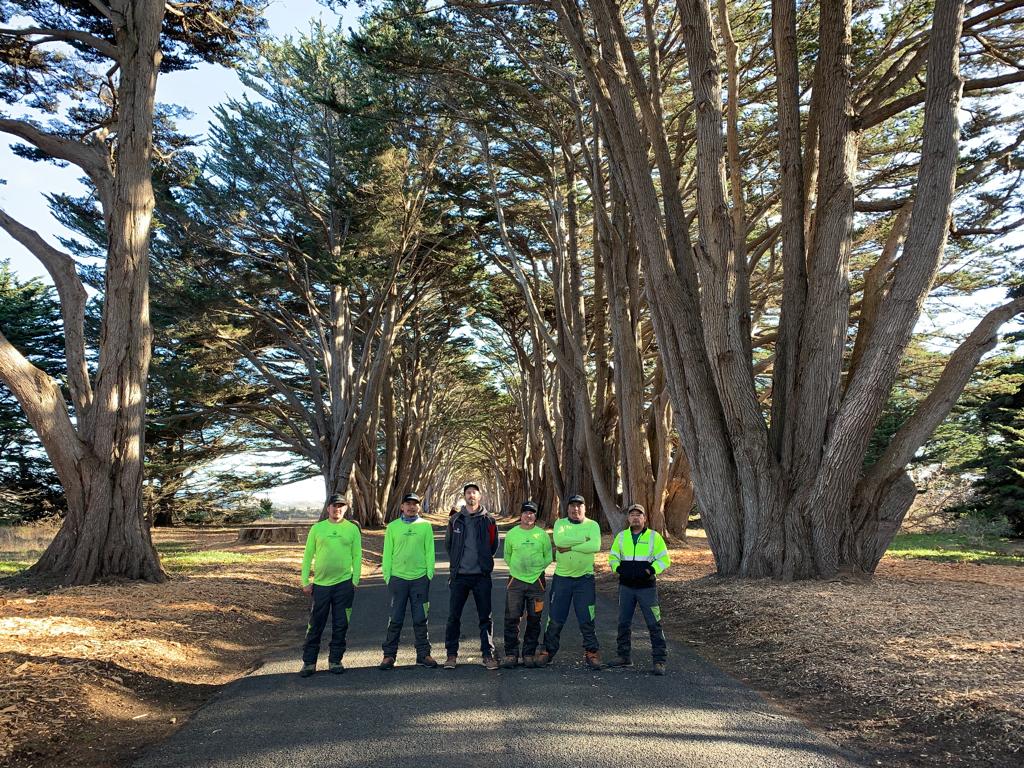
Arborist Now Team at the Cypress Tunnel of Point Reyes National Seashore
From Coastal Scrub to Urban Greenery
Historically, the area we now know as San Francisco was predominantly covered in coastal scrub. This original landscape was more open, dominated by hardy shrubs and grasses adapted to the coastal climate.
This lack of native forests led to a unique opportunity in urban planning and landscaping. This endeavor involved the introduction of a variety of tree species, both native to California and exotic species from around the globe.
The native species, like the majestic redwoods and robust oaks, are remnants of California's natural heritage, offering a glimpse into the region's ecological past. Conversely, the exotic species, such as p alms and ginkgos, are symbols of San Francisco's cultural and historical connections with the wider world.
Ecological Value: Guardians of Biodiversity
The ecological value of these trees is immense. They serve as crucial habitats for urban wildlife, offering shelter and sustenance to a variety of bird species, insects, and other fauna. Their presence enhances the city's biodiversity, contributing to the ecological balance within the urban environment. These trees are not just aesthetically pleasing elements but are vital components of San Francisco's ecosystem, playing a significant role in air purification, climate regulation, and urban heat reduction.
The Role of Careful Management and Conservation
The creation and maintenance of this urban forest have required careful planning and ongoing conservation efforts. Managing such a diverse range of tree species presents unique challenges. These challenges are especially difficult given the urban setting. These include ensuring the health and sustainability of the trees, preserving biodiversity, and balancing ecological needs with urban development. San Francisco's approach to urban forestry serves as a model for how cities can consciously create and maintain green spaces that benefit both the environment and the urban population.
A Living Legacy of Urban Ecology
San Francisco's urban forest stands as a living legacy of how cities can actively shape their ecological landscapes. It challenges the traditional notion of urban development at odds with nature, showing that cities can be havens of biodiversity and greenery. As we walk through San Francisco's leafy streets and verdant parks, we are walking through a man-made, yet harmoniously integrated, urban jungle—a testament to the possibilities of ecological engineering and urban forestry.
Mary Ellen Pleasant: An Environmental Visionary
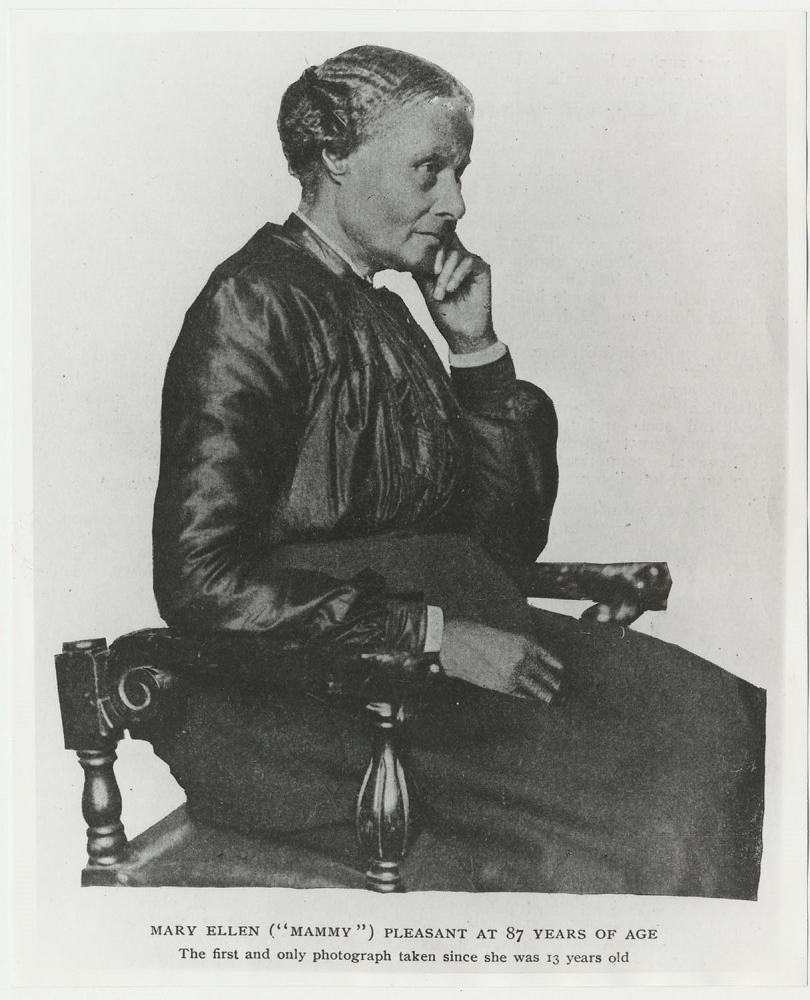
Photo Credit: Women & the American Story - https://wams.nyhistory.org/
Mary Ellen Pleasant’s progressive legacy encompasses remarkable achievements in civil liberties, entrepreneurship, and environmental sustainability. Less publicly lauded but equally momentous was her vision to actively shape San Francisco’s emerging urban landscape through strategic arboreal intervention.
Harnessing the Power of Trees
Pleasant recognized early on that trees, especially fast-growing nonnative varieties like the blue gum eucalyptus that towered over the city’s modest buildings, could transform more than just scenery.
These botanical giants offered shady respite from the summer heat, cleansing oxygen to growing neighborhoods, and most importantly, a bold announcement that this city would not be tamed by the conventions of more established Eastern metropolises.
By adorning her properties with small forests of eucalyptus, Monterey pine, and other charismatic species, Pleasant created an environment that sang of freedom, wonder, and endless possibility. The power of these small urban Edens radiated out into the community.
An Enduring Natural Legacy
Today, San Francisco’s landmark trees stand as living testaments to Pleasant’s remarkable vision of a city nourished by and in harmony with nature. Their verdant canopies continue her legacy of melding unbridled possibility with ecological balance. Beneath their gnarled boughs, the citizens of this city can connect to a history of resilience, diversity and environmental kinship that Pleasant herself helped root within the urban soil.
Embracing the Living Legacy: San Francisco's Landmark Trees and Their Enduring Connection to the City's Soul
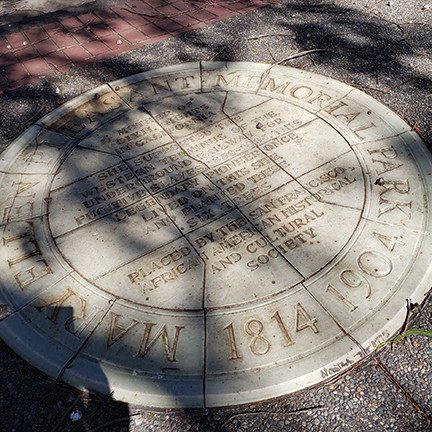
Street Plaque Memorializing Mary Ellen Pleasant's Home. Photo: sfheritage.org
As caretakers of San Francisco's urban forest, present-day arborists and tree advocates carry the duty of furthering Pleasant's living legacy for future generations. Applying expertise in areas like pruning, disease prevention, and nurturing climate resilience will allow our landmark trees to continue thriving amid modern demands.
At Arborist Now, we feel privileged to tend to many local landmark trees, from the eucalyptus of the Presidio to the memorial trees honoring Mary Ellen Pleasant herself. Caring for these living monuments that have borne witness to our city's evolution connects us to the past while guiding us toward a sustainable future.
Safeguarding San Francisco's natural heritage is more than a civic duty for us—it's a way we can honor the city's rich history and ensure the splendor of its urban ecosystem endures. By preserving these leafy giants, we preserve the soul of San Francisco. As stewards of this legacy handed down from forward thinkers like Pleasant, our mission is to pave an even brighter path for the urban forest to come.
Main Photo Credit: Ilya Krum





